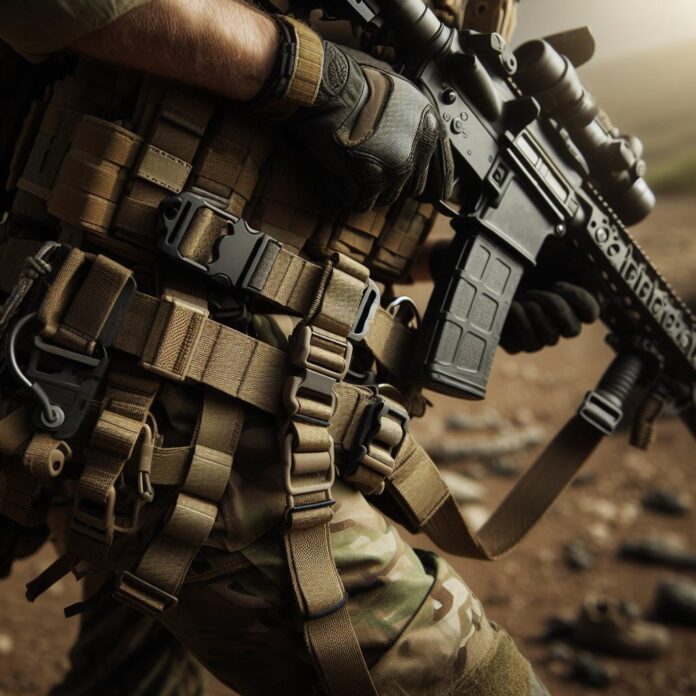Tactical slings for rifles play a crucial role in enhancing the functionality and performance of firearms in various tactical situations. Understanding the purpose, types, and benefits of using a tactical sling is essential for firearm enthusiasts and professionals alike.
To start, let’s delve into the introduction of tactical slings for rifles. A tactical sling is a specialized strap or harness designed to securely carry a rifle or firearm while providing quick and easy access when needed. It allows the user to have hands-free movement, better weapon retention, and rapid accessibility while maintaining shooting stability.
There are different types of tactical slings available, including single-point, two-point, and three-point slings. Each offers unique features and advantages, catering to different preferences and operational requirements.
Using a tactical sling brings several benefits to firearm users. These include improved weapon retention, hands-free movement, rapid weapon accessibility, and enhanced shooting stability. These benefits are essential in tactical situations where quick response and ease of movement are critical.
When choosing a tactical sling, several considerations need to be taken into account. These include the rifle type and configuration, sling attachment options, adjustability and comfort, and individual mission requirements. It is crucial to select a sling that suits your specific needs and preferences to optimize its functionality.
Proper usage of a tactical sling is also essential for maximizing its benefits. This includes adjusting the sling’s length, transitioning between ready and sling positions, and performing sling-supported shooting techniques. Following these techniques ensures safe and effective handling of the firearm while utilizing the tactical sling to its full potential.
Lastly, maintaining and caring for a tactical sling is necessary to ensure its longevity and functionality. Regular inspection, cleaning, and proper storage are essential practices to keep the sling in optimal condition for extended use.
What is a Tactical Sling?
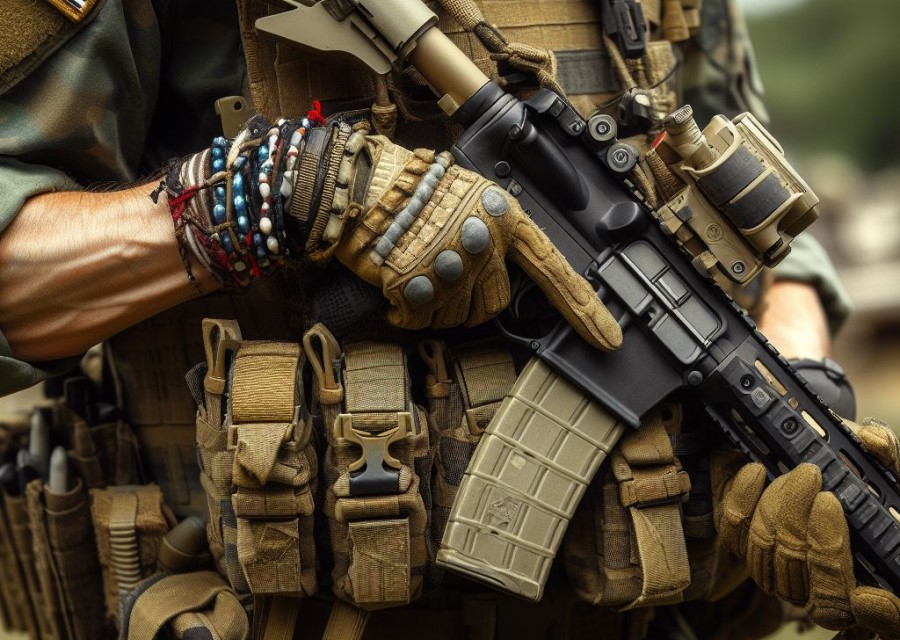
A tactical sling for rifles is more than just a simple accessory. It’s a game-changer when it comes to handling firearms. In this section, we’ll explore the ins and outs of tactical slings, understanding their purpose and how they enhance weapon maneuverability.
Get ready to discover the unmatched benefits of utilizing a tactical sling, and revolutionize your shooting experience like never before.
Understanding the Purpose of a Tactical Sling
A tactical sling is specifically designed for the purpose of using a rifle. Its main function is to provide easy carrying and quick access to the weapon. It allows the user to secure the rifle, keeping their hands free for other tasks. This is particularly beneficial in situations that require mobility and quick weapon accessibility.
To better understand the purpose and advantages of a tactical sling, let’s consider its key benefits. First, it enhances weapon retention, minimizing the risk of losing or dropping the rifle while on the move.
Second, it enables hands-free movement, allowing the user to perform other tasks without constantly holding the weapon.
Third, it facilitates rapid weapon accessibility, ensuring that the rifle can be quickly brought into action when needed. Finally, it improves shooting stability by providing a means to stabilize the rifle against the body or other supports.
When selecting a tactical sling, there are several factors to consider. These include the type and configuration of the rifle, the available sling attachment options, the adjustability and comfort of the sling, as well as the user’s mission requirements and personal preferences.
Types of Tactical Slings
When it comes to tactical slings for rifles, understanding the different types is crucial. Get ready to dive into the world of tactical slings and explore the variations that can enhance your firearm experience.
From the single-point tactical sling to the two-point and three-point options, each sub-section will unveil unique features and advantages that cater to specific needs. Stay tuned as we delve into the realm of tactical slings and discover the perfect fit for your rifle.
1. Single-Point Tactical Sling
A single-point tactical sling is a specialized sling designed specifically for rifles, providing numerous advantages over other sling types. This makes it a favored choice among military and law enforcement professionals.
- Enhanced maneuverability: The single-point design allows the rifle to hang freely, enabling quick transitions and easy movement even in tight spaces.
- Swift accessibility to the weapon: With a single-point sling, the rifle is always within easy reach, ensuring rapid deployment when necessary.
- Improved shooting stability: The sling offers support and stabilization to the rifle, facilitating easier and more accurate aiming and shooting.
- Customizability and comfort: Typically adjustable, single-point slings can be tailored to fit different body sizes and preferences, ensuring a secure and comfortable fit.
When selecting a single-point tactical sling, it is crucial to consider factors such as the type and configuration of your rifle, along with the available attachment options.
It is important to ensure compatibility between the sling and your specific firearm to guarantee a proper fit and optimal functionality.
Proper usage of a single-point tactical sling involves adjusting the length to achieve a comfortable fit, seamlessly transitioning between ready and sling positions, and practicing sling-supported shooting techniques.
Regular maintenance and care of the sling will ensure its longevity and optimal performance.
2. Two-Point Tactical Sling
A two-point tactical sling is a specialized type of rifle sling that offers enhanced functionality and versatility for the user. It brings several key features and benefits when utilized:
- Improved weapon retention: The two-point tactical sling ensures a secure and reliable hold on your rifle, keeping it easily accessible at all times.
- Hands-free movement: By utilizing a two-point tactical sling, you can keep your hands free for other tasks, eliminating concerns about setting down or misplacing your weapon.
- Rapid weapon accessibility: The design of the two-point tactical sling allows for quick and effortless access to your firearm, enabling swift response in dynamic situations.
- Enhanced shooting stability: Using a two-point tactical sling enables you to stabilize your rifle against your body, leading to improved accuracy and control while shooting.
3. Three-Point Tactical Sling
In the early days of firearms, slings were primarily used as simple carrying straps. However, as warfare evolved, so did the use of slings.
The concept of a three-point tactical sling was developed to provide soldiers with greater versatility and control over their rifles in combat situations. By attaching the three-point tactical sling at multiple points, soldiers could have a stable platform to carry and use their rifles while keeping their hands free for other tasks.
Over time, the three-point tactical sling became a valuable tool for military and law enforcement personnel, enhancing their maneuverability and overall effectiveness in the field.
Today, the three-point tactical sling continues to be a popular choice for professionals and firearms enthusiasts alike, offering a reliable and versatile solution for carrying and deploying rifles.
Benefits of Using a Tactical Sling
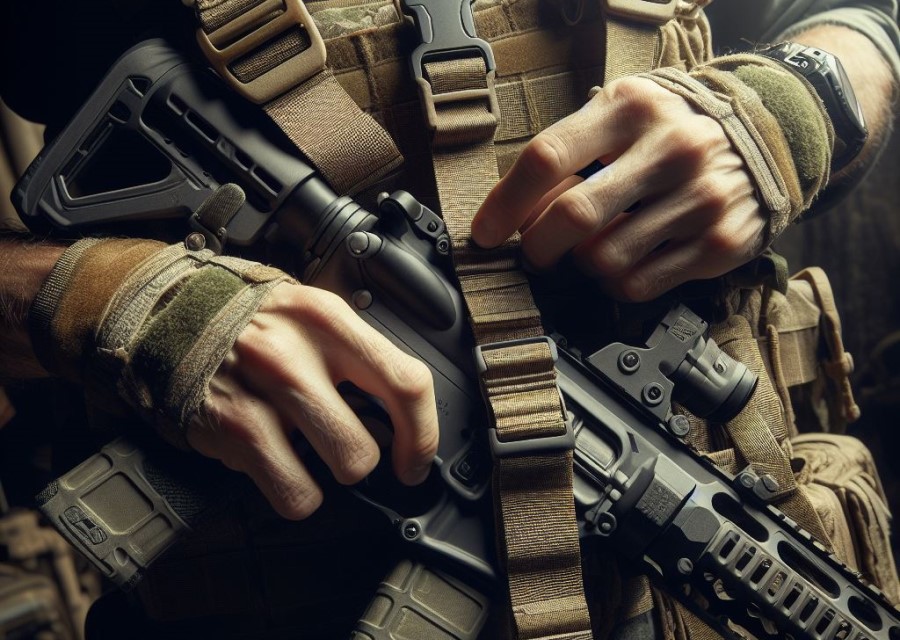
Discover the amazing benefits of using a tactical sling for your rifle. From improved weapon retention to hands-free movement, rapid weapon accessibility, and enhanced shooting stability, this section explores how a tactical sling can revolutionize your shooting experience.
Forget the hassle of constantly readjusting your grip or setting your rifle down. With a tactical sling, you can enhance your maneuverability, increase your shooting precision, and always be ready for action.
Say goodbye to cumbersome rifle handling and embrace the convenience and tactical advantage that a sling provides.
1. Improved Weapon Retention
Using a tactical sling provides a significant advantage in terms of improved weapon retention. It ensures that your firearm remains secure and close to your body, even during high-intensity situations.
- A tactical sling equipped with a quick-release buckle offers a dependable and efficient method of securing your weapon.
- The sling’s adjustable length allows you to find the optimal position for maintaining weapon retention.
- Enhance the stability and security of your weapon by attaching the sling to multiple points on your rifle, such as the stock and handguard.
- When it comes to maintaining weapon retention, it is essential to choose a durable and robust material like nylon or polyester. This ensures that the sling can withstand the weight and movement of the firearm.
When selecting a tactical sling to improve weapon retention, it is crucial to consider the specific needs of your mission and personal preference.
Evaluate the type and configuration of your rifle to determine the most suitable sling attachment options. Opt for a comfortable and adjustable sling that allows for easy maneuverability and securement.
Regular maintenance and care of the sling will also play a role in its effectiveness in maintaining weapon retention.
2. Hands-Free Movement
The hands-free movement is one of the benefits of using a tactical sling for rifles. By utilizing a tactical sling, you can effortlessly have your hands free to perform other tasks while still keeping your rifle easily accessible.
- Efficiency: When you securely sling your rifle across your body, you can conveniently have both hands available to handle other equipment or perform necessary tasks.
- Freedom of movement: A tactical sling grants you the freedom to move without the constant need to hold onto your rifle. This becomes particularly crucial in situations that demand agility and quick actions.
- Accessibility: The hands-free movement offered by a tactical sling ensures that your rifle is always within reach and prepared for use. This enables quick and efficient deployment of the weapon as and when needed.
- Safety: By maintaining your rifle slung across your body, you effectively reduce the risk of accidentally dropping or losing control of your firearm. This aspect holds significant importance in dynamic environments where maintaining control of your weapon is imperative.
- Comfort: With the aid of a tactical sling, the weight of the rifle is evenly distributed across your body, subsequently reducing fatigue and strain on your arms and shoulders. This allows for extended periods of carrying the weapon without experiencing any discomfort.
3. Rapid Weapon Accessibility
When it comes to rapid weapon accessibility, a tactical sling plays a crucial role. Here are some key aspects to consider:
- Quick Release Mechanism: A tactical sling should have a reliable and easy-to-use quick release mechanism that allows you to swiftly detach the weapon when needed. This ensures rapid weapon accessibility in high-pressure situations.
- Adjustability: The sling should be adjustable to fit your body size and preferred shooting position. This ensures comfort and quick maneuverability when accessing your weapon.
- Secure Attachment: It is essential that the tactical sling securely attaches to your rifle, preventing any accidental detachment or loss of weapon accessibility. Look for strong and durable attachment points.
- Single-Handed Operation: The sling should allow for single-handed operation, enabling you to quickly and efficiently transition from a slung position to a ready-to-fire position. This is particularly important in fast-paced tactical scenarios.
- Retain Weapon Readiness: A good tactical sling should keep the weapon close to your body while providing easy access. This ensures that you can rapidly bring the weapon into action whenever needed.
By considering these factors, you can choose a tactical sling that maximizes rapid weapon accessibility, allowing for quick response times and enhanced operational effectiveness.
4. Enhanced Shooting Stability
In the realm of tactical slings for rifles, enhanced shooting stability is a crucial factor to consider for improved weapon control and accuracy. Here are some key elements to enhance shooting stability:
- Adjustable Length: Look for a tactical sling that allows you to easily adjust its length to fit your body and shooting position. A longer sling length can provide added stability when shooting from various positions.
- Wide and Padded Straps: Opt for a sling with wide and padded straps that distribute the weight of the rifle evenly across your shoulder. This helps to reduce fatigue and enhances stability during extended shooting sessions.
- Attachment Points: Ensure that the tactical sling has strong and secure attachment points on both ends, allowing for a stable connection between your rifle and the sling. This prevents any unwanted movement or wobbling while aiming and shooting.
- Tension Control: Some slings offer tension control mechanisms that allow you to customize the level of tightness around your body. This feature helps to keep your rifle secure and stable while still allowing for quick and easy access when needed.
By considering these factors, you can choose a tactical sling that enhances shooting stability, providing you with better control and accuracy during your shooting sessions.
Remember, stability is just one aspect to consider when selecting a tactical sling. Be sure to also evaluate other features that align with your specific mission requirements and personal preferences.
Considerations When Choosing a Tactical Sling
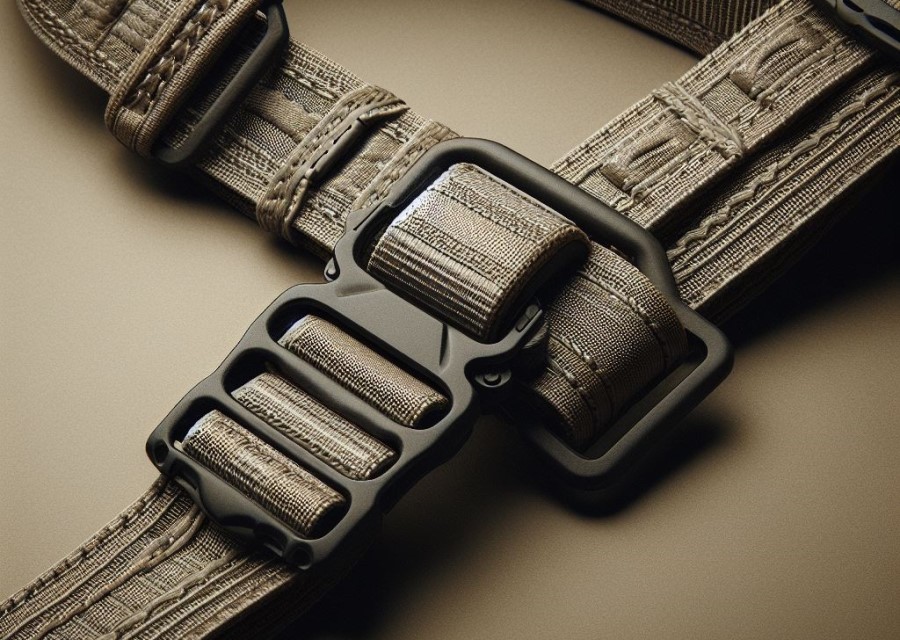
When it comes to choosing a tactical sling for your rifle, there are several factors to consider.
From the type and configuration of your rifle to the various sling attachment options available, it’s important to find the right balance of adjustability, comfort, and meeting your mission requirements.
In this section, we’ll explore these considerations and delve into why they matter when selecting the perfect tactical sling. So, buckle up and get ready to make an informed choice for your rifle setup!
1. Rifle Type and Configuration
When considering the best tactical sling for your rifle, it’s crucial to take into account the specific rifle type and configuration. This will ensure that the sling is compatible and functions optimally with your firearm.
| Rifle Type: | Configuration: |
| AR-15 | Semi-automatic, magazine-fed |
| Bolt-action | Single-shot, manually operated |
| Shotgun | Pump-action, break-action, semi-automatic |
| AK-47 | Semi-automatic, gas-operated |
The rifle type will influence the sling attachment points and the overall design of the sling. For example, the AR-15 typically has multiple attachment points, including a front and rear sling swivel, whereas a bolt-action rifle may only have a single sling swivel at the forend.
Additionally, the configuration of the rifle, such as the presence of a stock or a rail system, may affect how the sling can be properly mounted and adjusted. Some slings are specifically designed for rifles with rail systems, allowing for easy attachment and adjustment.
Considering the rifle type and configuration ensures that you select a tactical sling that fits securely, enhances weapon retention, and provides ease of use for your specific firearm.
2. Sling Attachment Options
When it comes to sling attachment options for tactical slings, there are a few key choices to consider:
- QD Swivel Attachment: This option allows for quick and easy attachment and detachment of the sling. The quick-detach (QD) swivel enables rapid transition between different shooting positions and offers versatility for various tactical situations.
- Push Button Attachment: A push button attachment system offers a secure and reliable connection between the sling and the rifle. This type of attachment is sturdy and convenient, ensuring that the sling remains securely attached during intense activities.
- Loop Attachment: Loop attachments provide a simple and lightweight option for sling attachment. By threading the sling through a loop, you can create a secure connection without the need for additional hardware. This option is often preferred for its simplicity and ease of use.
- Mounting Plate Attachment: Some tactical slings utilize mounting plates that are installed on the rifle. These plates offer a solid and reliable attachment point for the sling, ensuring stability and durability during use.
When choosing a sling attachment option, consider factors such as the specific rifle type and configuration, personal preference, and mission requirements. Assess the pros and cons of each attachment option to determine which one best suits your needs.
Ultimately, the selection of a sling attachment option should prioritize functionality, reliability, and ease of use. Consider the demands of your tactical activities and the specific requirements of your rifle to make an informed decision.
3. Adjustability and Comfort
When considering the adjustability and comfort of a tactical sling for rifles, there are several important factors to keep in mind:
- Strap Length: A tactical sling should have an adjustable strap length to accommodate different body sizes and preferences. This ensures a comfortable fit and the ability to customize the sling for various shooting positions or carry styles.
- Padding: Look for a sling that offers padding or cushioning on the shoulder strap. This helps distribute the weight of the rifle more evenly and reduces discomfort or fatigue during extended use.
- Attachment Point Adjustability: Some tactical slings allow users to adjust the attachment points on the rifle. This is particularly useful for achieving the desired balance and positioning of the rifle, depending on the user’s body size, shooting style, or personal preference.
- Quick-Release Features: Consider slings with quick-release buckles or mechanisms for easier and faster removal or adjustment. This can be useful in scenarios where you need to switch between different carry positions or transition between firearm and non-firearm activities.
- Breathable Materials: Look for slings made from breathable materials that allow air to flow and prevent excessive sweating or discomfort, especially during hot weather conditions or strenuous activities.
It is essential to choose a tactical sling that offers adjustability and comfort to meet your specific needs and preferences. By considering these factors, you can ensure that your sling enhances your shooting experience and provides optimal usability and comfort.
4. Mission Requirements and Personal Preference
When selecting a tactical sling, it is vital to take into consideration both mission requirements and personal preference. These factors play a critical role in determining the appropriateness and effectiveness of the sling for individual needs.
| Mission Requirements: | A tactical sling should align with the specific demands of the mission or activity. Mission requirements include factors such as the type of mission, environment, and anticipated scenarios. For instance, for close-quarter combat situations, a single-point sling offers greater maneuverability and swift transitions, while a two-point sling provides better stability and weapon retention for longer-range engagements. |
| Personal Preference: | Personal preference plays a crucial role in the selection of a tactical sling. It is important to consider factors such as body size, shooting style, and carrying preferences. Some individuals may prioritize a sling that allows easy transition between shoulder carry and shooting positions, while others may value a sling that provides maximum comfort for extended periods of wear. |
By considering both mission requirements and personal preference, individuals can choose a tactical sling that enhances their overall effectiveness, comfort, and operational efficiency.
How to Properly Use a Tactical Sling
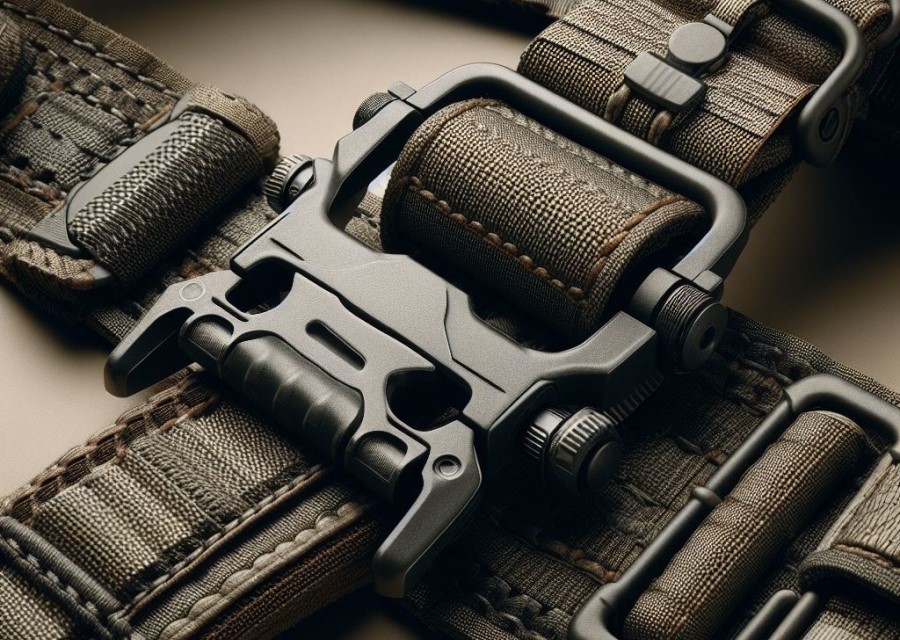
Discover the art of using a tactical sling for rifles and take your shooting skills to the next level.
In this section, we will cover the essential techniques needed to properly employ a tactical sling.
From adjusting its length to seamlessly transitioning between ready and sling positions, we’ve got you covered.
Get ready to elevate your shooting game as we delve into the world of sling-supported shooting.
1. Adjusting the Length
When adjusting the length of a tactical sling, it is important to follow several key steps:
- Determine the desired length: Take into consideration your body size, weapon type, and personal preference to determine the optimal length for your tactical sling.
- Locate the adjustment mechanism: Identify the buckle or mechanism that allows you to adjust the length of the sling.
- Loosen the sling: Release the tension on the adjustment mechanism to loosen the sling and create more slack.
- Lengthen or shorten the sling: Manipulate the adjustment mechanism to either increase or decrease the length of the sling. Make gradual adjustments to find the ideal fit.
- Test the length: After making the desired adjustment, test the length of the sling by shouldering your rifle. Ensure that the sling allows for comfortable and secure positioning of the weapon.
- Secure the adjustment mechanism: Once you are satisfied with the length, tighten the adjustment mechanism to secure the sling in place.
- Verify the functionality: Check that the sling functions properly by performing various movements, such as transitioning between ready and sling positions.
- Readjust if necessary: If the length feels uncomfortable or restricts movement, repeat the adjustment process and fine-tune until you achieve the desired fit.
2. Transitioning Between Ready and Sling Positions
When transitioning between ready and sling positions with a tactical sling, it is crucial to follow these steps:
- Assess the situation: Evaluate the tactical environment and determine if it is suitable to transition between ready and sling positions.
- Secure the rifle: Grasp the rifle with the non-firing hand while keeping the finger off the trigger and the muzzle pointed in a safe direction.
- Release tension: If the sling is tight, release the tension by loosening the adjustment mechanism or unclasping any buckles or fasteners.
- Transition to ready position: Move the rifle smoothly and quickly to the ready position, with the barrel parallel to the ground and the stock against your shoulder.
- Engage targets: Acquire and engage targets as necessary while maintaining a stable shooting stance and using proper shooting techniques.
- Transition to sling position: When the situation allows, transition the rifle back to the sling position by reversing the steps taken to move to the ready position.
- Secure the sling: Ensure that the sling is properly adjusted and secured so that the rifle remains in a safe and secure position.
Remember, practicing these transitions regularly will help improve your proficiency and adaptability in various tactical situations. Always prioritize safety and follow proper firearm handling procedures.
3. Performing Sling-Supported Shooting
To perform sling-supported shooting with a tactical sling, follow these steps:
- Adjust the length of the sling according to your preference and shooting position.
- Position yourself in a stable shooting stance and place your non-shooting arm through the sling.
- Use your non-shooting hand to hold the rifle’s handguard or forend for support.
- Apply tension to the sling by pulling it tight with your non-shooting hand.
- Use the sling as a support point to stabilize your shooting position.
- Keep your body and rifle aligned with the target.
- Aim and squeeze the trigger, maintaining the stability provided by the sling.
- Follow through with your shot and reassess your target if necessary.
Performing sling-supported shooting with a tactical sling can significantly enhance shooting stability, allowing for improved accuracy and control during firearm use.
Tactical Sling Maintenance and Care
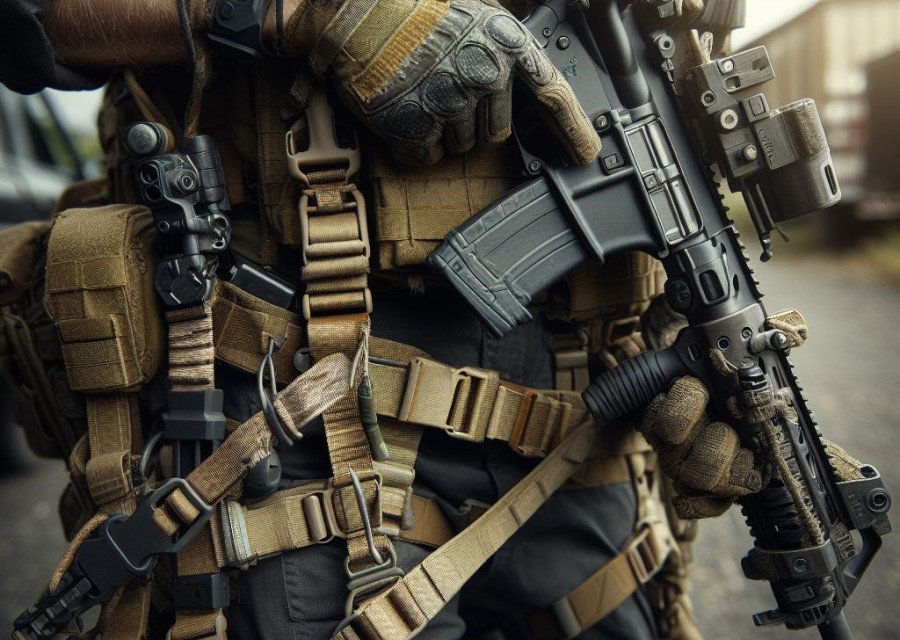
When it comes to tactical sling maintenance and care, it is crucial to follow several important steps to keep your sling in optimal condition:
- Perform regular cleaning: It is essential to clean your sling regularly to eliminate dirt, debris, and moisture. Use a mild detergent and a soft cloth to gently wipe down the sling, ensuring that you clean all the nooks and crannies.
- Thoroughly inspect for wear and tear: It is vital to regularly check your sling for any signs of wear and tear. Look out for fraying, loose stitching, or damaged hardware. If you notice any issues, promptly repair or replace the sling as necessary.
- Store appropriately: When your sling is not in use, store it in a cool and dry place. Avoid exposing it to extreme temperatures or direct sunlight, as these conditions can cause damage to the materials.
- Apply lubrication: If your sling has moving parts or adjustable features, apply a small amount of lubricant to ensure smooth operation. Always use a lubricant that is compatible with the materials of your sling.
- Ensure proper adjustment and fit: Periodically check the fit and adjustment of your sling. Make sure it is properly adjusted to your body and secure enough to hold your rifle. Make any necessary adjustments to maintain the proper fit.
- Adhere to manufacturer’s instructions: Always follow the manufacturer’s instructions for cleaning, maintenance, and care of your specific sling. They may provide additional guidance or specifications for your particular sling model.
By diligently following these tactical sling maintenance and care guidelines, you can ensure that your sling remains reliable and functional for many years to come.
Frequently Asked Questions
What is a tactical sling for rifles?
A tactical sling for rifles is a strap or harness that is used to carry and stabilize a firearm during aiming. It is designed to hold your rifle securely and safely, allowing for comfortable carry and improved recoil control. Tactical slings are made from ultra-durable materials like neoprene or nylon and are designed for use with different types of firearms, including rifles and submachine guns.
What are the different types of sling mounting systems?
There are three types of sling mounting systems: single-point, two-point, and three-point. Single-point slings allow for easy switching between shoulders but can be uncomfortable and unsafe as the rifle can bounce around and point in the wrong direction. Two-point slings can be carried in different styles and are generally safe, while three-point slings offer versatility but can limit movement and feel restrictive. It is important to choose the sling mounting system that best suits your needs and preferences.
What are the advantages and disadvantages of different types of slings?
The simple/traditional sling is the oldest and most familiar design, with two connection points that allow the shooter to carry the weapon over their back or draped across the torso. It can also act as a shooting aid. The Ching/CW sling helps the shooter aim steadily and is part of the Scout Rifle concept. The two-point quick-adjust sling is similar to the simple sling but has the ability to quickly adjust the length. The three-point sling functions more like a harness and allows the shooter to release the weapon without fear of dropping it. The single-point sling permits the shooter to transition to firing from the opposite shoulder and is best suited for short-term tactical use. However, it can interfere with movement and hang up on the shooter’s gear. Each type of sling has its own advantages and disadvantages, so it is important to consider your specific needs and purposes.
Which are some popular and trusted brands for rifle slings?
Some popular and trusted brands for rifle slings include Blackhawk, Condor, and Elite Survival Systems. These brands are known for offering high-quality slings made from durable materials. Their slings are trusted by tactical operators for providing the functionality and comfort needed for their jobs and missions. When choosing a rifle sling, it is important to consider reputable brands like these that offer reliable products.
What are some popular options for rifle slings?
There are several popular options for rifle slings, each with its own features and adjustments. Some top picks recommended by experts include the Armageddon Gear LFT, Blackhawk MPCS, Savvy Sniper Quad, SOB Tactical B-Sling, and Viking Tactics MK2. These slings are known for their durability, comfort, and functionality. It is important to consider your specific needs and preferences when choosing the best sling for your rifle.
What are the different mounting standards for attaching a sling to a rifle?
There are different mounting standards for attaching a sling to a rifle. These include sling swivel studs, quick detach sling mounts (QD), and flush cup sling mounts. Sling swivel studs can be mounted in various ways, such as using wood or machine screws or adapters to other mounting standards. Quick detach sling mounts consist of a push button swivel attached to the sling and a corresponding socket on the firearm. The swivel can be quickly taken on and off by pushing the QD button. Flush cup sockets can be mounted by drilling a hole in the stock or using an adapter. When choosing a sling, it is important to consider the mounting standards that are compatible with your rifle.

